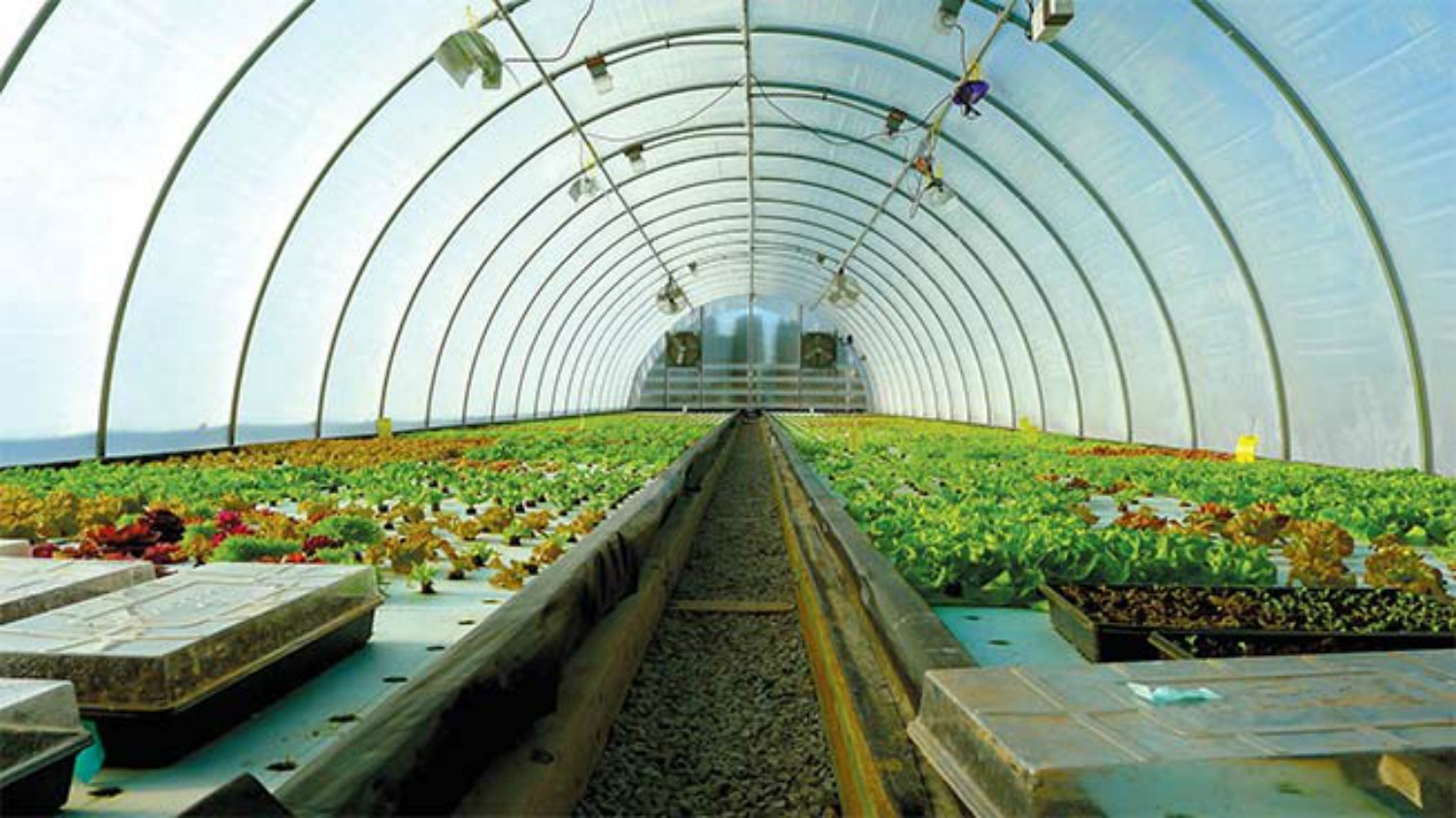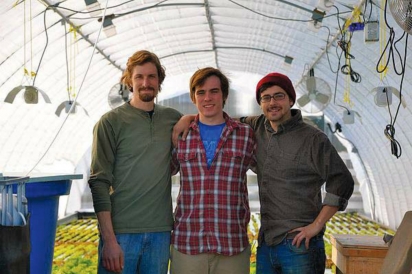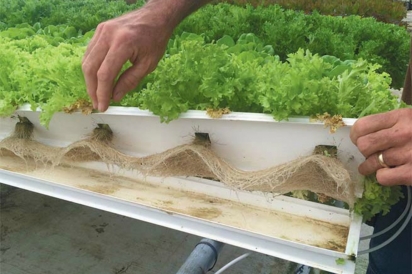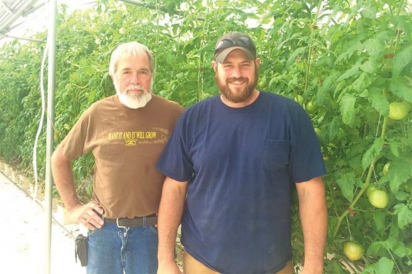Delving into the Future of Farming with Hydroponics
The Concept is Far From Being All Wet
The face of farming is changing. As our understanding of science and technology advances, farming methods both new and old open up opportunities for the future.
One growing movement is hydroponics, which focuses on nutrient rich water rather than soil. You may have unknowingly experimented with it yourself in the past. Anytime you have dropped a sprout in a jar of water to help it develop root systems, you have experienced a form of hydroponics. Plants don’t need soil. They need nutrients.
They don’t need to sit out in the hot fields. They just need sunlight. If you can create the right environment, you can grow delicious, soilless produce. There are a number of local farmers in the hydroponics industry in Northeast Wisconsin.
In Neenah, Grow Local operates like a startup. It began in 2011 when Alex Fehrenbach, Calvin Andersen and Steve Catlin decided to build their hoop house. “We felt that the food [industry] was ripe for disruption. We knew we wanted to be in the space,” says Catlin.
Ledgeview Gardens, based in De Pere, is a family-owned farm by Joe and Darren Vollmar. This father and son team have dug deep into the hydroponics space while running an 18- acre field farm at the same time. Despite taking very different paths into the industry, both farms are full of passion for hydroponics and how it can impact the local food scene.
At one time, hydroponically grown food was considered inferior and ‘waterlogged.’ However, many hydroponic farmers have invested their time and energy to perfecting the art of tasty, high quality greens and produce.
Hydroponic gardens have the benefit of taking up less square footage than a standard field. Some systems allow for vertical growth to maximize small space. As most hydroponics farms are either indoors or in a greenhouse or hoop house, the growing season is lengthened because farmers can control some of the variables like temperature, nutrients and light. However, this control comes at a cost.
Whether hoop house, greenhouse or another indoor space, it can be expensive to heat and cool a hydroponic garden. The electricity is always running. You have to maximize your use of the space with the right produce.
“The plants have to produce enough value so you can continue to do this,” says Joe Vollmar of Ledgeview Gardens. “Tomatoes are the highest value crop. That’s why most hydroponic growers grow tomatoes. Lettuce has the quickest turnover. We can go from seed to sellable product in 35 to 45 days depending on the variety.”
With the ability to control more of the environment and the need for quick turnover, hydroponic farmers often create overlap in their planting and harvesting. As one section of lettuce is harvested, another is planted, and a third is growing to maturity. In this way, a farmer is able to maximize the variety of their weekly offerings to local consumers. A longer growing season gives these local farmers more opportunities. Most hoop houses and greenhouses can keep in the heat to extend each season by about a month. Some, like Grow Local, grow year round.
Hydroponic gardens have the benefit of taking up less square footage than a standard field. Some systems allow for vertical growth to maximize small space. As most hydroponics farms are either indoors or in a greenhouse or hoop house, the growing season is lengthened because farmers can control some of the variables like temperature, nutrients and light. However, this control comes at a cost.
Whether hoop house, greenhouse or another indoor space, it can be expensive to heat and cool a hydroponic garden. The electricity is always running. You have to maximize your use of the space with the right produce.
“The plants have to produce enough value so you can continue to do this,” says Joe Vollmar of Ledgeview Gardens. “Tomatoes are the highest value crop. That’s why most hydroponic growers grow tomatoes. Lettuce has the quickest turnover. We can go from seed to sellable product in 35 to 45 days depending on the variety.”
With the ability to control more of the environment and the need for quick turnover, hydroponic farmers often create overlap in their planting and harvesting. As one section of lettuce is harvested, another is planted, and a third is growing to maturity. In this way, a farmer is able to maximize the variety of their weekly offerings to local consumers. A longer growing season gives these local farmers more opportunities. Most hoop houses and greenhouses can keep in the heat to extend each season by about a month. Some, like Grow Local, grow year round.
Anytime you have dropped a
sprout in a jar of water to help
it develop root systems, you
have experienced a form of
hydroponics.
How Hydroponics Work
There are a number of different methods for farming in water. The main focus is to enrich water with nutrients and use that water to feed the plants.
Grow Local uses a raft-based, recirculating system. The plants are tucked into the holes of large rafts, which fl oat on a slow moving trough. Their roots float freely in the water, soaking up everything they need. “Basically, as the roots are growing, the water and nutrients are moving past them. So, the roots don’t have to invade new areas to capture more nutrients. The nutrients are getting actively pumped right to the roots all the time,” says Catlin.
To enrich the water with the right nutrients, Grow Local starts with fish. “We have bluegill and perch swimming around in a few tanks. We feed them and then their waste is converted into plant food by nitrifying bacteria and red worms in here.” Catlin gestures to a barrel connected to the large fish tank. Another pipe takes the nutrient rich water right into the wide-water trench that stretches down the long hoop house. Nitrification is the biological oxidation of ammonia to nitrite.
Ledgeview Gardens uses two main types of systems for their range of foods. The setup and nutrient mixtures depend on the plant. Green leaf, red crisp, bib, and other varieties of lettuce grow in water channels that are narrow enough for just one row of plants. Dozens of these are lined up on bench-height table for easy management and harvesting.
Unlike the farm’s lettuces, the tomatoes plants at Ledgeview Gardens use a different hydroponic system. The trellised tomato plants stretch high overhead. Some are over 20 feet long, with their lower vines draped over their pots. Their roots sit, not directly in water but in pots of an inert material that provides stabilization for the roots. To feed them, a pipe connects the long line of tomato pots and fi lls each with enriched water for a short amount of time each day to prevent oversaturation.
Where to Find Local Hydroponic Food
Many hydroponics farms sell their produce directly to restaurants. The chefs with incredible enthusiasm for local ingredients often work with farms like Grow Local and Ledgeview Gardens. Both farms work with restaurants throughout Northeast Wisconsin including Hinterland in Green Bay, Spat’s Restaurant in Appleton, Town Council in Neenah, and others all the way up the Door County Peninsula.
“We really like being on the edge of food innovation, and that’s where you’re going to find it,” says Catlin. “It’s through these chefs that want to be next level.”
You can also find hydroponic produce at many of the local farmers markets or sign up for a weekly CSA basket this spring.
Available produce depends on the season and the hydroponic system, but you can find a huge variety. Nearly all hydroponics farms offer a range a lettuce options. Grow Local specializes in microgreens, herbs and root vegetables including cilantro, beets and scallions. They also sell the mature bluegill and perch from their tanks. Ledgeview Gardens is well-known for its tomatoes, but it also carries a wide selection of cucumbers, string beans and peppers.
With all of the systems’ incredible benefits, will all of your food be grown hydroponically in the future? No, says Catlin. “I think the future has to be a vast diversity of growing techniques. Hydroponics is a strong contender for a lot of farmers, but nothing should ever become just one dominant technique because it could fail. There are some really cool technologies in hydroponics and permaculture being refined right now—some that are new, some that are millennia old. For each farm, there’s a different technique that’s going to be the best one for them.”








